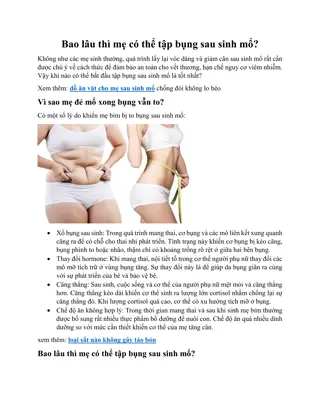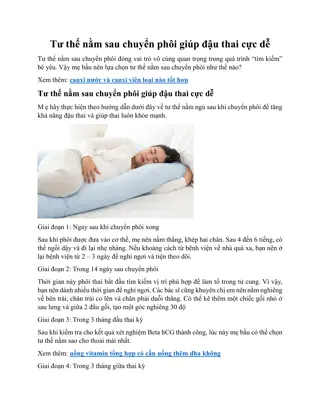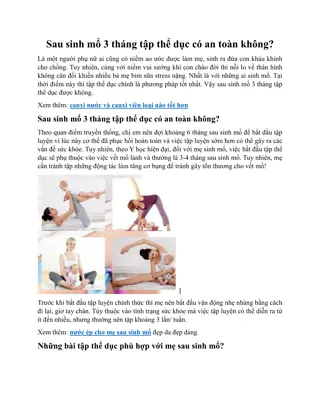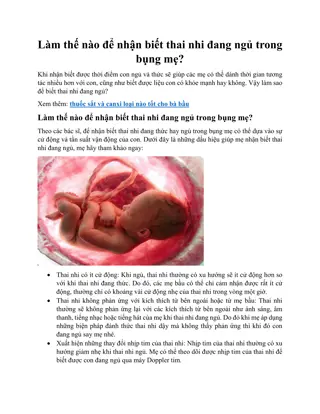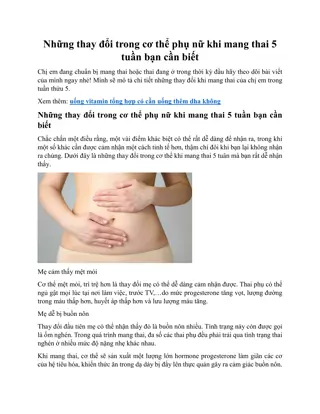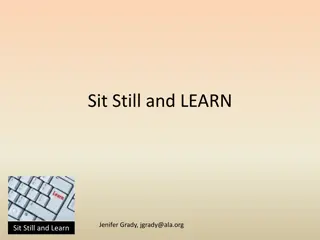The Essence of Learning and Education at NDSU
Delve into the critical aspects of learning, effective educational experiences, and the value of education at NDSU. Engage in thought-provoking discussions on teachers, students, environments, materials, content, and pedagogy. Reflect on personal experiences, diverse arguments on learning, and analyze a popular film on education. Discover the significance of education, future prospects, and enhancing critical thinking skills for a fulfilling academic journey.
Download Presentation

Please find below an Image/Link to download the presentation.
The content on the website is provided AS IS for your information and personal use only. It may not be sold, licensed, or shared on other websites without obtaining consent from the author.If you encounter any issues during the download, it is possible that the publisher has removed the file from their server.
You are allowed to download the files provided on this website for personal or commercial use, subject to the condition that they are used lawfully. All files are the property of their respective owners.
The content on the website is provided AS IS for your information and personal use only. It may not be sold, licensed, or shared on other websites without obtaining consent from the author.
E N D
Presentation Transcript
Why are you here? at NDSU?
Youve all been in school for most of your lives. You must be experts on what makes a learning experience effective, what makes a teacher good, what the most essential elements in any learning experience must be, and what s wrong with our educational system... Right?
This stuff is pretty important. After all, here you are, spending quite a lot of your own or someone else s money on an education, committing yourself to at least 4 years, putting yourself through all kinds of nutsoid experiences. Will it be worth it? What s all of it FOR? How can you get the most out of it?
For your first project, well be asking those questions and more. We ll read some philosophically very different arguments on learning, examine our own personal experiences, and then closely analyze a popular movie about education. You will hopefully do some interesting thinking about the very class you are sitting in, about your all-important future, and about how to critically examine arguments which popular media are continually making.
Remember, on the first day, I asked you to describe this class ? Let s look at some excerpts.
What are the fundamental elements of any learning experience? TEACHER. STUDENT. ENVIRONMENT. MATERIALS. CONTENT, SUBJECT MATTER. METHODS. PHILOSOPHY (PEDAGOGY).
Readings for This Project See our Schedule as well as the Project Assignment 1 folder in Bb.
BTW, what did you think of the article about yoga pants in North Dakota high schools?
Whats this films argument? What is it trying to get us to believe or think or feel or do? Entertainment media continually present arguments to us, whether we re conscious of it or not. Of course, the aim of such media is to please as many people as possible, so something the theses of such works are contradictory, multiple, or vague. Some, however, have very clear messages.
Rhetorical Situation of Dangerous Minds (CONTEXT or a sense of the whole or the who-what-when-where-why ) America has long wrangled with a number of continuing issues in education, not the least of which involve poverty, funding, violence, busing, teacher-administration friction, the commodification of education, insufficient learning, low test scores (especially in relation to the rest of the world), and alarming drop-out rates. These problems have long been represented in popular films such as Stand and Deliver, Dead Poet s Society, and Blackboard Jungle. Indeed, the heroic teacher genre is well-established and goes back at least as far as the 1939, Goodbye, Mr. Chips. Dangerous Minds, a 1995 American movie directed by John Smith and staring Michelle Pfeifer, is positioned in that film tradition. It is based on a novel by teacher LuAnn Johnson called, My Posse Don t Do Homework. A summary of the film appears at IMDb: An ex- marine teacher struggles to connect with her students in an inner city school.
Rhetorical Stance of Dangerous Minds (the movie s angle or approach) Anti-administration, anti-status quo, anti- establishment. Pro-teacher. Pro-innovation. Pro-underdog (in this case, under-advantaged high school kids).
Major Claims: What is This Film SAYING about Education? (explicitly or implicitly) The most important element in any learning situation is _______________________. A good teacher is one who _________________. The best teaching methods are___________________. Literacy means __________________________.
Traditional teaching methods don t work in the toughest teaching situations or for minority kids from the inner city. Teachers need to become intimately familiar with their students for education to work: visit their homes, advise them on pregnancy issues, take them to dinner, buy them things, invite them to spend the night (for safety reasons). The teacher s job is to rescue students from their homelife and ethnicity (Lalor). Teachers need to dedicate all of their time to teaching, 24-7, for education to work. Administrators and state Boards of Education are undermining the educational experience (they re evil, basically). Some parents are undermining their children s education. Our educational problems are due in part to parents. The proper goal of education is to help students enter the white middle or upper- middle class. Students are motivated by candy, amusement parks, expensive dinners. Minority kids need a white person to lead them to salvation.
Minor Claims (explicit or implicit) High School teachers have one class per day! A typical class is about 50 seconds long! Intimate familiarity with their students has no bearing on what grades a teacher gives them Boards of Education pick lousy books. Teaching makes teachers become hardened, self- destructive, and somewhat jaded (recall LuAnn's friend and colleague, the history teacher). Teaching makes teachers want to bail, but caring students can coax them to remain.
Appeals (Kinds of Evidence) in Defense of Its Claims (the film s moves )
Ethos LouAnn Johnson, who wrote the novel on which the film is based, is a teacher herself. The film is based on her novel, and so gains some credibility. We trust the character of the person who helped to make the film. In contrast to earlier films of its kind, Dangerous Minds boldly shows inner-city life realistically and with gritty imagery and music. This realism gives it credibility, a feeling that we are getting the real thing. The film is captivating and pleasant to watch, with formula elements common to most popular film (violence, sex, tears, happy ending, agreeable ideology). It just makes us feel good, even when things in the story itself are bad.
Pathos Scenes which show LuAnn's initial fear, then anger, then concern, and finally grief. Various scenes which show emotional student-teacher bonding. Various scenes which show the violent lives and limited options of the students. Scenes of their homes. Final scene of LuAnn and her fellow teacher walking down a hall into the light. Use of visual rhetoric (images): Opening shots (while credits appear): unpleasant, grainy, black and white images contrasted with smooth, bright, colored images. This use of color and landscape suggests a sharp divide between two different worlds, one favorable, one not. Administrator who is never seen outside of an office or even out of his desk! Shots of the vice-principle entering the troubled classroom only briefly and on the fly. The various partitions between the school hallway and the principal s office. The visual separation of the good kids classroom from the bad kids classroom, with the hallway as a boundary.
Logos Principles Closer teacher-family communication helps to make the educational process more cohesive and unified. It s human nature that we learn from what interests us. Students respond to what they can relate to. Pop art such as rock songs actually do connect in meaningful ways to high art such as Dylan Thomas poems and is a successful tool for high school education. High school materials are chosen by committee and are often bland and safe. Facts This apparently worked in real life! The real LuAnn class. Students really are in danger in inner city schools and have dangerous home lives as well.
Logical Fallacies (just a quick peek) Hidden Assumptions Contradictory Ideology Does the film contradict its own premises and in reality promote a classist and racist status-quo? (see essay by Labor).
Is the Argument Convincing? Labor's Analysis It s unrealistic. It s racist. It contradicts its own ideology. It regards students backgrounds and heritage to be a liability. Students cultural experiences aren t worthy of incorporating into classroom lessons. Provides a stereotypical portrayal of black and Hispanic kids as intellectually inferior, hostile, and childish. Assumes that the goal of education is to become white middle or upper-middle-class consumers. Assumes that high school students are like babies who want candy, trips to amusement parks, etc. [B]aiding students with gimmicks and bribes does more than cast a moral shadow on the pedagogical value of such an approach or on the teacher as a kind of ethical exemplar, it also makes clear how aggressively indifferent LuAnn is to her students experiences, interests, cultural resources, or the skills they need to survive'. Too many popular films push these racist, classist, unrealistic views of education.
For Project 1... you will analyze your own choice of any popular film about education. You will investigate what mass media are telling us; what messages about education are being argued.
Assignment for Project #1 Rhetorical Analysis of Popular Media: Films about Education
Ok. Lets do some more close examination of readings. Why? To help you consider additional and/or competing views of education. To gain practice reading carefully and with understanding. To continue practice summary writing.
Actual assignment is in Bb, Weekly Work How to Do a Summary Summaries are extremely useful: they help you to boil a piece of writing down to its essentials; they can be used on exams; they can help you study; they can be used when you want to integrate sources into your writing; AND they force you to read well! 1. Identify the essay s THESIS. What is its LARGEST point? 2. Identify the essay s topic sentences (main idea or point of each paragraph). You may have to extract or piece together an IMPLIED topic sentence or idea. 3. Write down those topic sentences in paragraph form. 4. Paraphrase each sentence thoroughly. 5. Add transitions, connecting words, lead-ins, including the author s name and the title of the piece you are summarizing. Voila! You have a precise SNAPSHOT of the essay, completely in your own words!
Summarizing John Holts School Is Bad for Children 1. What s his MAIN claim (thesis)? 2. What is each paragraph claiming? I.e., what is each paragraph s main point? This is likely stated in a topic sentence or you will need to extract an implied point. (Note that each of these points are effectively the essay s sub-claims which support the MAIN claim or thesis.) 3. Group those sentences. 4. Paraphrase each one thoroughly. 5. Add lead-ins, etc. 6. Give your summary a title.
Putting your draft together will be easy! I. Intro and rhetorical situation. II. Thesis and rhetorical stance. III. Appeals (use specific examples; describe specific scenes and actions). a. Ethos: how credible is the film s argument? How fair-minded is the argument? What presents itself as evidence of credibility? Pathos: what feelings does the film evoke in us? BE SPECIFIC. Logos: what facts, principles, common sense or otherwise rational lines of reasoning are presented in support of the argument? Remember to notice VISUAL RHETORIC. b. c. d. IV. Brief Assessment and conclusion REMEMBER: YOU ARE NOT PRIMARILY EVALUATING; YOU ARE ANALYZING WITH JUST A LITTLE ASSESSMENT.
WHAT IN THE HECK IS VISUAL RHETORIC? Camera work used for effect: long shots, medium shots, close-ups. Long shots: drama, scale, contrast. Close-ups: emotions, intimacy, character s thoughts. Color and shape used for effect: straight lines, curvy lines, mellow colors, bright colors, primary colors, complex colors, etc. Specific colors and shapes carry cultural messages and coding. Editing used for effect: cut-always, fades, wipes, dissolves. Angle of view used for surprise, emotional effect, emphasis etc.
MANUSCRIPT FORMAT LINKS TO HELP ARE AT THE TOP OF THE ASSIGNMENT ITSELF. This isn t a research paper, but you should get in the habit of documenting sources. So: be sure to include a Work Cited page. See links for how to do MLA documentation.
Camera work in cinematography: To help you further understand how to analyze a film using these three rhetorical appeals, you will need to know some cinematography film terms. While in the editing process of a film, the selected editors use a 'cut' or change from one shot to another without using a fade or other type of transition to move onto the next shot. For example, in Twilight, the editors cut away from Edward to Bella during their conversation he saves her in the parking lot. Other transition techniques are fade, wipe, and dissolve. All of these are used to create the effects that writers, producers and editors want you to see. Lastly, long shots, medium shots, and close-ups are used to show things like the emotion in a characters face(close-up), or the atmosphere around them (medium shot) or the entire ship while its in warp speed while in space (long shot). http://rhetoricinfilm.blogspot.com/
VISUAL RHETORIC in Dangerous Minds Opening credits: mostly long shots; also shift in environment parallels a shift from black & white to color, grainy and high contrast to glossy. Scene in which LouAnne finds out about student death: lots of close-ups. Final scene, walking into the light. Principle ensconced behind desk. Separation of rooms.
Draft #1 A possible, easy organizational strategy....
I. INTRO AND BACKGROUND Full name of film, your purpose, some basic details about film. Maybe plot summary. I. BODY Sample transition to new paragraph & new rhetorical element: A. Rhetorical Situation B. Rhetorical Stance Now let s look at the film s rhetorical situation. Rhetorical situation means.....This film was made....The primary issue in the film....At the time the film was made... etc. C. Rhetorical Appeals D. Ethos Reputation of director or script writer; historical accuracy; fairness to other viewpoints; production values; quality of acting; verisimilitude etc. E. Logos Facts, general reasoning, cause-effect relationships; etc. F. Pathos Specific feelings evoked in viewer and the scenes which evoke those feelings Visual techniques which enhance pathos: close-ups and long-shots; color & texture; cuts, dissolves, and other kinds of editing G. Acknowledgment of Other Views and Refutation III. CONCLUSION Maybe a brief assessment, possibly comments on the film s issue itself and what s going on in the news right now; maybe how well the film was received.
Typical problems in first drafts for this assignment!! 1. The writer spends most of the paper summarizing the film s plot rather than analyzing the film s argument. You only need a little plot summary to help your reader; re- telling the movie s story is not the point of your paper! 2. The writer spends most of the paper evaluating the film rather than analyzing its argument.
For Thursday, 12th! Write a well-developed 2nd draft, at least 3 full pages! Bring 2 hardcopies! SAVE all drafts!
Fundamentals, Format, & Cosmetics STAPLE everything!!!!!!! Film questions sheet, peer critiques, the draft with my comments, and final product. Make more than one stapled set if the collection of materials gets too thick and a single staple won t work. Title of your essay Title of films MLA manuscript format: http://bcs.bedfordstmartins.com/resdoc5e/RES5e_ch08_s1-0013.html My comments on your drafts If they aren t legible, talk to me! I indicate problem sometimes with mechanics. You re expected to fix them . If you have trouble, contact Center for Writers or me. Even if I haven t indicated where errors might be, you are responsible for editing and proofing.
Appropriate Focus & Drawing Connections Our subject of inquiry for this unit has been education, and we ve discussed this subject from a variety of perspectives. You ve also read a variety of essays about it. Your film analysis should focus on what the film is saying about education; that is, the argument it is making about: teachers, students, teacher-student relationships, learning environments, progressive vs. traditional methods, and so on. You are expected to enrich and develop your analysis by drawing, where you can, on any of our discussions or readings. Remember our work with summaries? Try summarizing a little from one of our sources.
Sentence Clarity & Concision Watch out for fuzzy, laborious, wordy constructions. When practicing new terminology and views, we all tend to write sometimes cumbersome or vague sentences. Take extra care in editing out problems. Pay careful attention to Writing Today reading assignments.
Discussion of Your Films Rhetorical Elements Apply the specific terms we ve been using in class. Be sure to use those terms correctly. Clearly show how specific details of the film relate to and/or support the rhetorical element being analyzed at any given point in your essay.
Review Helpful Materials for This Unit! There are an assortment of readings, Power Point presentations, and other documents in Blackboard to help you with this project. Be sure to read and review these items.
A Sample (Bare-Bones) Outline I. Intro to Film, Thesis, Rhet. Situation This film s main point is that students and teachers should be emotionally close and even friends. Link your discussion of each rhetorical element back to the film s thesis. (How is each element of the film s argument supporting the main point about education it would like us to believe?) II. Analysis of the Film s Rhetorical Appeals Ethos Pathos Logos you are saying about each appeal. Provide plenty of specific examples and details from the movie to demonstrate what Conclusion and Brief Appraisal of the Film s Argument: Is it Effective?
FOR TUES., FEB. 24TH If you feel confident about your essay, you may hand it in. If you d like to wait for my additional pointers on Tues., you may hand it in on Thurs. Watch for an email from me with attachments! Start reading art reviews! Films, concerts, CDs, novels, exhibits, plays, etc. Try Spectrum, Fargo Forum, High Plains Reader, Amazon.com

















